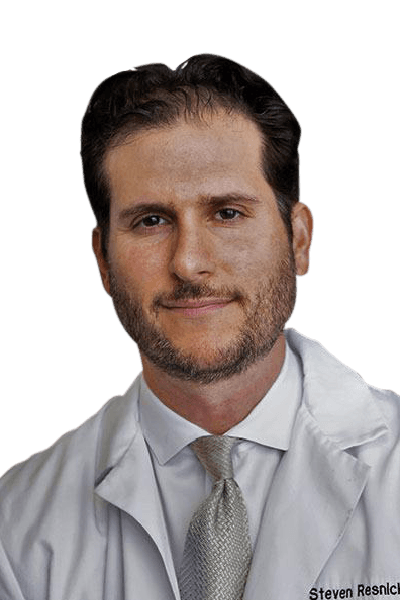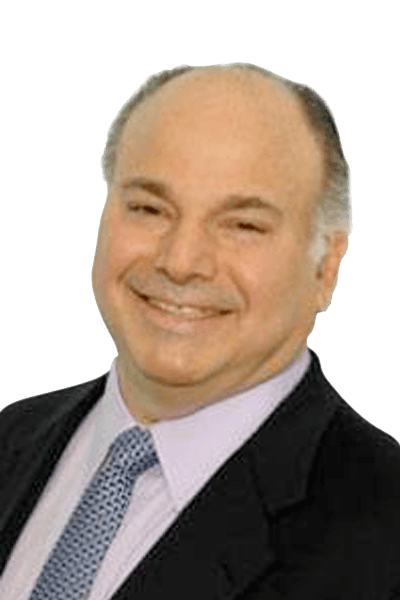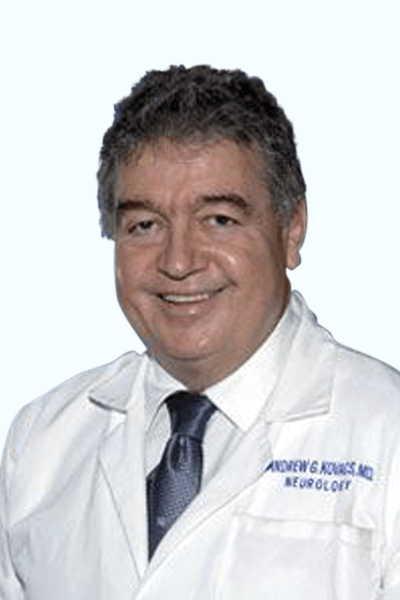The Harvey R. Chaplin Family Stroke & Chest Pain Center
Overview & Our Approach
At Mount Sinai Medical Center, our expertly trained physicians work with advanced imaging technology, the latest research data, and a multidisciplinary team of providers to deliver the best quality stroke care in the region. Patients and their families can take comfort knowing The Harvey R. Chaplin Family Stroke & Chest Pain Center at Mount Sinai has earned designation as a Comprehensive Stroke Center (CSC) by The Joint Commission, considered the “gold seal of approval” for healthcare accreditation. In fact, our Stroke Center has the highest level of accreditation available in the United States, and we are one of only 15 hospitals in Florida that have achieved this honor.
Mount Sinai has set exceptionally high standards for stroke prevention, rehabilitation, education, and community awareness. The American Stroke Association (ASA) has recognized the medical center’s system wide initiatives by presenting the hospital with its Gold Plus Performance Achievement Award for stroke care, the highest recognition given by the ASA. The award recognizes Mount Sinai’s commitment and success in meeting all of the association’s Get With The Guidelines® stroke performance indicators and quality measures, which leads to higher quality of care and better outcomes. Efforts are continuing to evolve the medical center’s stroke program, including adding neuroendovascular dedicated spaces and incorporating the latest technology into both new and redesigned spaces. Whether you access care at our main campus in Miami Beach or our freestanding emergency programs in Aventura or Hialeah, you can expect the same standard of exceptional care. For outcomes, click here.
Experience Meets Speed
At Mount Sinai Medical Center’s Stroke Center, our physicians, nurses, and technicians treat approximately 450 stroke patients each year. As a result, they have the experience and expertise to administer appropriate treatment quickly. As a testament to their skill, Mount Sinai has some of the fastest “Door-to-Needle” time in the region. This refers to the time from when a patient enters the emergency department to the time when they receive clot-busting medication or some other form of intervention to prevent long-term damage.
In addition to their proven ability to quickly care for patients suffering stroke symptoms, Mount Sinai’s Stroke Center physicians include doctors who are trained specifically in treating neuroendovascular diseases. This advanced fellowship training better prepares our doctors to care for stroke patients by collaborating daily with the entire team of physicians to review patients’ circumstances and collectively determine the treatment plan.
Accreditations and Awards
- Mount Sinai’s stroke center has earned designation as a Comprehensive Stroke Center by The Joint Commission. This designation assures patients that the center follows national standards and guidelines that can significantly improve the outcomes of the most complex stroke cases.
- Mount Sinai was only the second hospital in Miami-Dade County and one of just 16 in the state to receive the designation, which recognizes the medical center’s well-developed, system-wide initiatives on stroke prevention, rehabilitation, education, community awareness, and research.
- The American Stroke Association (ASA) has recognized our system-wide initiatives by presenting Mount Sinai with its Gold Plus Performance Achievement Award for stroke care, the highest recognition given by the ASA and the GWTG Stroke Award (AHA) for Target Stroke Elite Plus Honor Roll this award highlights Mount Sinai’s performance with intravenous thrombolytics.
- The award recognizes our commitment and success in meeting all of the association’s Get With The Guidelines stroke performance indicators and quality measures. Recent studies show that patients treated in hospitals who meet these measures receive a higher quality of care and may experience better outcomes.
What is a Stroke?
In the event of a stroke, every second counts. Getting help quickly and knowing where to find the best care can save lives.
The American Stroke Association estimates that approximately 795,000 Americans experience either a new or recurrent stroke each year. It stands as the fifth leading cause of death in the United States, capable of affecting any individual regardless of race, sex, or age.
Stroke
A stroke, or cerebrovascular accident (CVA), occurs when blood supply to part of the brain is disrupted. This disruption restricts the delivery of oxygen and glucose to the brain. Strokes can happen when there’s a blockage in the arterial blood flow to the brain or when a blood vessel in the brain ruptures. Since blood carries oxygen and nutrients to the neurons (nerve cells) in the brain, the cessation of blood flow causes these cells to die. As a result, bodily functions controlled by the nerve cells can cease to work properly. That’s why understanding the signs of a stroke and being aware of risk factors could be crucial in saving your life.
The BE FAST method is the most recognized and easiest-to-remember method to identify a stroke. It stands for the following symptoms:
- Balance: Loss of balance
- Eyes: Changes in eyesight or ability to see
- Face: Facial droop, uneven smile
- Arm: Numbness or weakness in the arm
- Speech: Slurred speech, difficulty speaking or understanding
- Time: Call 911 and get to the hospital immediately
Stroke Risk Factors
- High blood pressure
- High cholesterol
- Diabetes
- Smoking
- Heavy alcohol use
- Physical inactivity and obesity
- Atrial fibrillation (irregular heartbeat)
- Family history of stroke
IRB Approved Research: Endovascular Thrombectomy for LVO and MeVO
PK Papyrus Stent System
The most common type of stroke, ischemic strokes are caused by blockages in the blood vessels that deliver blood to the brain. These blockages can occur as blood clots, a buildup of plaque, or other particles.
A rupture or leakage of an artery inside the brain causes this type of stroke, leading to a buildup of pooled blood that increases pressure within the brain and damages vital brain cells. If a patient has been diagnosed with brain aneurysms, which occur when the wall of an artery weakens and bulges, these bulges, if left untreated, can burst and cause a catastrophic hemorrhagic stroke.
These types of strokes can be either ischemic or hemorrhagic. They’re defined by the location of the stroke preventing blood from reaching the brain stem, which is found at the base of the brain.
A cryptogenic stroke is a stroke of an unknown cause. Some likely causes may include atrial fibrillation (an irregular, often rapid heartbeat), structural heart issues, atherosclerosis of major arteries (hardening of the arteries), and blood clotting disorders. Roughly, one in three ischemic strokes fall under the cryptogenic category.
Also known as a ministroke, a TIA is often seen as warning sign and can be triggered by blood clots. TIAs must be treated as emergencies since there is no way to there is no definitive way to distinguish symptoms between a TIA and a full-blown stroke.
Treatments
The physicians, nurses, and technicians at the Stroke Center use a wide array of diagnostic and treatment tools, such as advanced imaging technology, minimally-invasive neuroendovascular interventions, and effective medications to identify strokes and produce the best possible outcomes for patients. The Mount Sinai arsenal of treatments includes the following:A carotid angioplasty is performed in order to expand clogged vessels and improve the blood flow to the brain by opening up the carotid artery—the main supplier of blood to the brain. In this procedure, a small balloon is attached to the end of a thin wire that is inserted into the carotid artery, where it is then inflated to push open the artery.
At Mount Sinai, physicians often use stents during angioplasties. Stents, which are small metal coils resembling mini scaffolds, are inserted into an expanded artery to prevent it from narrowing again. While our physicians may employ angioplasty and stenting for strokes caused by blocked arteries, these approaches are not utilized for hemorrhagic strokes.
A method used to treat plaque buildup in the carotid artery, which can potentially obstruct blood flow to the brain, a carotid endarterectomy occurs when surgeons open the carotid arteries by cutting a small incision along the sides of the neck. Then, they will remove plaque and buildup from inside the artery. Afterward, our surgical team sutures the arteries and the skin. At Mount Sinai, a physician may choose to perform carotid endarterectomy instead of an angioplasty.
In this procedure, a surgeon aims to stop intracranial hemorrhaging (brain bleed). First, a catheter, or thin wire, is inserted into an artery in the leg. The, the catheter is guided using X-ray to visualize the wire as it approaches the bleed. Once the catheter is near the brain, the surgeon will administer material, glue, or medication that seals the blood vessel and prevents further bleeding.
In the window of the first four-and-a-half hours from the onset of symptoms of an ischemic stroke, a fibrinolytic drug known as Alteplase can be administered into the veins. Alteplase works by dissolving blood clots responsible for the stroke, and if injected within this narrow timeframe, patients can avoid any long-term effects. For this reason, it’s essential to seek medical attention at the emergency department upon experiencing symptoms of a stroke.
In addition to intravenous administration, Alteplase can be delivered close to the clot using a catheter. The neuroendovascular surgeon involves will guide the catheter through either the leg or arm, up to the brain.
During these procedures that treat ischemic strokes, your Mount Sinai surgeon will operate directly on the blocked artery. They are typically minimally invasive and may include techniques such as mechanical thrombectomy and aspiration retrieval.
During this procedure, the neuroendovascular surgeon, along with a team of stroke experts, inserts a catheter or thin guided wire into the blocked artery to retrieve the blood clot or plaque. This procedure is sometimes the sole intervention for removing occlusions, particularly in cases of “large vessel occlusions,” and may also be used together with intravenous Alteplase when patients meet the time and eligibility criteria.
When a patient has an aneurysm, a surgeon can repair it through a procedure called “clipping.” During this process, a clip is attached to the bulging part of the aneurysm to cut off blood flow, allowing blood to circulate normally through the rest of the artery.
Diagnosis
Mount Sinai’s physicians offer comprehensive diagnostic procedures for stroke patients to facilitate early intervention and improve outcomes. These diagnostic tools include the following:- Blood Tests: Tests blood sugar levels and cholesterol, which can indicate the likelihood of blockages.
- Carotid Ultrasound: Provides detailed images of the carotid artery using sound waves to detect blockages impeding blood flow.
- Cerebral Angiogram: Uses X-ray imaging to show blockages in the arteries by inserting a catheter into the body through the groin, which then releases dye into the blood vessels to show any abnormalities.
- CT Scans: Employs X-rays to capture hundreds of cross-sectional images of the body, resembling slices, to assess the condition of blood vessels in the brain and distinguish between ischemic and hemorrhagic strokes.
- Echocardiogram: Uses sound waves to show the blood flowing through the heart as well as any blockages leading to a stroke.
- MRI: Captures images of the brain through a magnetic field, often used in cases of complex symptoms or when assessing the severity of a stroke proves challenging. Following a transient ischemic attack (TIA), MRIs are frequently employed to pinpoint the stroke’s location.
- Physical Exam: Takes a patient’s blood pressure and pulse, and looks for physical signs of stroke (similar to those used in the BE FAST method).
Our Physicians
Steven J Resnick, DO
Chief, Division of Neurology
Medical Stroke Director
- Neuroscience
- Neurology
- Vascular Neurology
- Mount Sinai Medical Center (Main Campus)
- 305.674.2121
- Mount Sinai Medical Center (Main Campus)
- 305.674.2950
John C Chaloupka, MD
Section Chief, Neuro Interventional/Neuro Endovascular Surgery
- Neuroscience
- Stroke Care
- Neuro Endovascular Surgery
- Mount Sinai Medical Center (Main Campus)
- 305.674.2121
Andrew G Kovacs, MD
- Neuroscience
- Neurology
- Mount Sinai Medical Center (Main Campus)
- 305.538.1877
- Bay Harbor
- 305.865.1995





